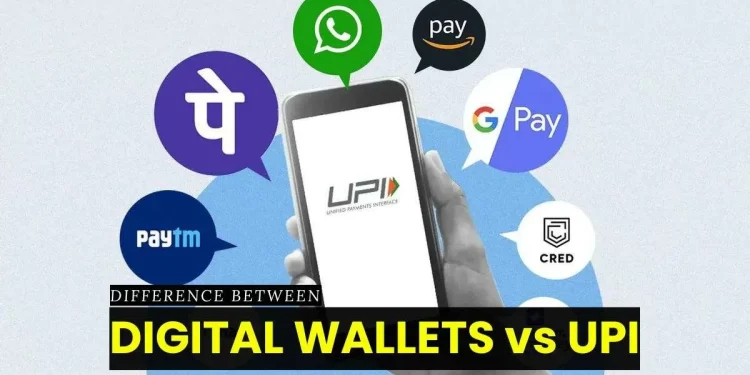The Impact of Digital Payments in India: UPI, Wallets, and More 💸📲🇮🇳
Digital payments have revolutionized how India does business, transforming everything from street vendors to large retailers. Thanks to innovations like UPI and digital wallets, cashless transactions have become mainstream, fast, and more secure.
Let’s explore how digital payments are shaping India’s economy, the challenges, and what’s next in this exciting fintech journey.
🌟 A Revolution in Payments
✅ Convenience at Your Fingertips: Digital payments make it easy to pay bills, transfer money, and shop — anytime, anywhere.
✅ Financial Inclusion: Even people without bank accounts can access digital wallets and mobile payments.
✅ Boost to Small Businesses: Small merchants can accept digital payments, expanding their customer base.
✅ Reduced Corruption: Digital transactions leave an audit trail, making it harder for illegal cash-based activities to thrive.
🔥 Key Drivers of Digital Payments in India
🔹 Unified Payments Interface (UPI): Launched in 2016, UPI has become the backbone of India’s digital payment system, offering instant and secure bank-to-bank transfers.
🔹 Digital Wallets: Apps like Paytm, PhonePe, Google Pay, and Amazon Pay make payments fast and easy, even for those without a debit card.
🔹 Aadhaar Integration: Linking bank accounts to Aadhaar has helped expand digital payments to rural and semi-urban areas.
🔹 COVID-19 Impact: The pandemic accelerated the adoption of contactless and online payments.
🚀 Impressive Growth Numbers
✅ UPI Transactions: Crossed 14 billion transactions in a month (as of early 2025), showing massive adoption.
✅ Merchant Payments: Small businesses and shops are increasingly using QR codes to accept payments.
✅ Rural Penetration: Digital payments are no longer just an urban phenomenon.
🚧 Challenges and Concerns
🔹 Cybersecurity Risks: Fraud and scams are a real threat — users need to be vigilant.
🔹 Digital Literacy: Many people still need training and awareness to use these systems safely.
🔹 Connectivity Gaps: Rural areas sometimes face challenges due to patchy internet.
🔹 Data Privacy: Users worry about how their personal data is handled.
💡 The Road Ahead
✅ Fintech Innovation: Startups and banks are working on new solutions like voice-based payments and offline digital payments.
✅ Interoperability: UPI’s integration with global payment systems is on the horizon.
✅ Government Push: Initiatives like Digital India continue to promote cashless transactions.
✅ Financial Inclusion: Digital payments can bring more people into the formal economy and empower rural communities.
🌟 Final Thoughts
Digital payments are more than just a trend in India — they’re a transformative shift that’s redefining how people live, work, and do business. From big cities to remote villages, the journey toward a cashless India is well underway.
💬 How has digital payment changed your life? Do you prefer UPI, digital wallets, or good old cash? Let me know your thoughts in the comments!
Would you like me to include a guide on using UPI safely or examples of how small businesses are benefiting? Let me know! 📲✨ToolsDigital payments have revolutionized how India does business, transforming everything from street vendors to large retailers. Thanks to innovations like UPI and digital wallets, cashless transactions have become mainstream, fast, and more secure.
Let’s explore how digital payments are shaping India’s economy, the challenges, and what’s next in this exciting fintech journey.
🌟 A Revolution in Payments
✅ Convenience at Your Fingertips: Digital payments make it easy to pay bills, transfer money, and shop — anytime, anywhere.
✅ Financial Inclusion: Even people without bank accounts can access digital wallets and mobile payments.
✅ Boost to Small Businesses: Small merchants can accept digital payments, expanding their customer base.
✅ Reduced Corruption: Digital transactions leave an audit trail, making it harder for illegal cash-based activities to thrive.
🔥 Key Drivers of Digital Payments in India
🔹 Unified Payments Interface (UPI): Launched in 2016, UPI has become the backbone of India’s digital payment system, offering instant and secure bank-to-bank transfers.
🔹 Digital Wallets: Apps like Paytm, PhonePe, Google Pay, and Amazon Pay make payments fast and easy, even for those without a debit card.
🔹 Aadhaar Integration: Linking bank accounts to Aadhaar has helped expand digital payments to rural and semi-urban areas.
🔹 COVID-19 Impact: The pandemic accelerated the adoption of contactless and online payments.
🚀 Impressive Growth Numbers
✅ UPI Transactions: Crossed 14 billion transactions in a month (as of early 2025), showing massive adoption.
✅ Merchant Payments: Small businesses and shops are increasingly using QR codes to accept payments.
✅ Rural Penetration: Digital payments are no longer just an urban phenomenon.
🚧 Challenges and Concerns
🔹 Cybersecurity Risks: Fraud and scams are a real threat — users need to be vigilant.
🔹 Digital Literacy: Many people still need training and awareness to use these systems safely.
🔹 Connectivity Gaps: Rural areas sometimes face challenges due to patchy internet.
🔹 Data Privacy: Users worry about how their personal data is handled.
💡 The Road Ahead
✅ Fintech Innovation: Startups and banks are working on new solutions like voice-based payments and offline digital payments.
✅ Interoperability: UPI’s integration with global payment systems is on the horizon.
✅ Government Push: Initiatives like Digital India continue to promote cashless transactions.
✅ Financial Inclusion: Digital payments can bring more people into the formal economy and empower rural communities.
🌟 Final Thoughts
Digital payments are more than just a trend in India — they’re a transformative shift that’s redefining how people live, work, and do business. From big cities to remote villages, the journey toward a cashless India is well underway.
💬 How has digital payment changed your life? Do you prefer UPI, digital wallets, or good old cash? Let me know your thoughts in the comments!
Would you like me to include a guide on using UPI safely or examples of how small businesses are benefiting? Let me know! 📲✨Tools
































































